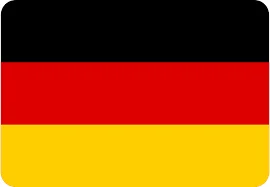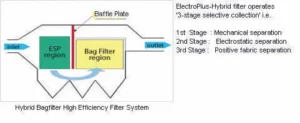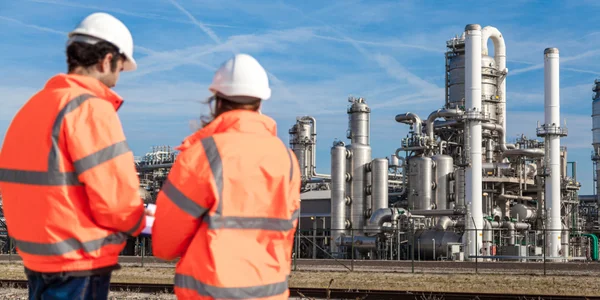المرشحات الهجينة
- المترسبات الكهروستاتيكية
- بيوت الوسائد الهوائية العكسية
- مرشحات النسيج
- مرشحات كهربائية هجينة
- إزالة الكبريت من غازات المداخن
- مبرد سحب قسري
- منظفات
- محطات تنظيف الغاز
- الأعاصير
- استنساخات متعددة
- نظام إزالة المركبات العضوية المتطايرة والروائح
- نظام شفط الغبار
- نظام استخراج الأبخرة
- أجهزة الحماية من الانفجار
- المراوح والمراوح
- معالجة مياه الصرف الصحي
- مبادل حراري من الهواء إلى الهواء
المكاتب
المقر الرئيسي

ألمانيا
-
التصفية المكثفة Himenviro Technologies GmbH
Neustraße 45 - 49, 42553, فيلبرت, ألمانيا/ألمانيا - +49 20534200990
المكتب الاقليمي

بريطانيا العظمى
-
فلتر مكثف من شركة Himenviro UK Limited
47، شارع باث WS13BX، والسال، ويست ميدلاندز، بريطانيا العظمى - +44 1922 628893
المكتب الاقليمي

الإمارات العربية المتحدة
-
فلتر مكثف Himenviro Technologies FZE – LLC
مركز الأعمال، المنطقة الحرة لمدينة الشارقة للنشر، الشارقة، الإمارات العربية المتحدة - +971-556074697
المكتب الاقليمي

الهند
-
شركة هيمنفيرو برايفيت ليميتد
د-247/11، القطاع 63، نويدا - 201301، أوتار براديش، الهند - +91-120-4642-500
المكتب الاقليمي




الهند
-
شركة هيمنفيرو برايفيت ليميتد
د-247/11، القطاع 63، نويدا - 201301، أوتار براديش، الهند - +91-120-4642-500
المكتب الاقليمي




الهند
-
شركة هيمنفيرو برايفيت ليميتد
د-247/11، القطاع 63، نويدا - 201301، أوتار براديش، الهند - +91-120-4642-500
مرشحات كهربائية هجينة
إن تقنية "Electro-Plus-Hybrid Filter" التي نقدمها هي عبارة عن موفر للحلول، حيث تستخدم نظام ترشيح يستخدم الكهرباء الساكنة على الجسيمات، لتحقيق كفاءة تجميع أعلى مع انخفاض أقل في الضغط. كما تعمل على حل مشكلة زيادة انخفاض الضغط التي يتم ملاحظتها بشكل متكرر بسبب انسداد الكيس عن طريق تشريب جزيئات الغبار الدقيقة، في حالة نظام ترشيح الكيس التقليدي، مما يعزز عمر الكيس بشكل كبير. إن الفلتر الهجين هو نظام ترشيح معقد عالي الكفاءة وعالي الأداء حيث تمنع جزيئات الغبار من طبقة بنية الشجيرات على سطح الكيس اختراق الجسيمات الدقيقة وتقلل من حالة التعمية لأكياس الترشيح، وبالتالي تعزز كفاءة الترشيح للنظام الهجين. إن الفلتر الهجين هو نظام ترشيح معقد عالي الكفاءة وعالي الأداء حيث تمنع جزيئات الغبار من طبقة بنية الشجيرات على سطح الكيس اختراق الجسيمات الدقيقة وتقلل من حالة التعمية لأكياس الترشيح، وبالتالي تعزز كفاءة الترشيح للنظام الهجين.
طلب






عملية
خدماتنا
دراسة الحالة
الأسئلة الشائعة
1. What is a hybrid filter?
A hybrid filter is a device that cleans dirty air by combining two methods: electrostatic precipitation and fabric filtration. First, it uses electrical charges to capture large dust particles. Then, it uses fabric filters to catch smaller particles, making the air cleaner and safer to breathe.
2. How does a hybrid filter work?
A hybrid filter works in two steps. First, the electrostatic section charges and captures large dust particles from the air. Next, the air passes through fabric filters that trap the remaining fine particles. This two-step process ensures efficient removal of dust and pollutants from the air.
3. Why are hybrid filters used in industries?
Industries use hybrid filters to keep the air clean by removing dust and harmful particles produced during manufacturing. This helps protect workers’ health, reduces environmental pollution, and ensures compliance with air quality regulations.
4. What are the benefits of using a hybrid filter?
Hybrid filters offer several benefits:
- كفاءة عالية: They effectively remove both large and small particles from the air.
- Energy Savings: The combination of technologies reduces energy consumption compared to using separate systems.
- فعالة من حيث التكلفة: They often require less maintenance and have longer lifespans, saving money over time.
5. In which industries are hybrid filters commonly used?
Hybrid filters are commonly used in industries such as:
- إنتاج الأسمنت: To control dust emissions.
- Power Plants: To remove fly ash from flue gases.
- Steel Manufacturing: To capture metallic dust particles.
- Chemical Processing: To filter out hazardous airborne particles.
6. How does a hybrid filter compare to traditional filters?
Unlike traditional filters that use only one method, hybrid filters combine electrostatic and fabric filtration techniques. This combination allows them to capture a wider range of particle sizes more efficiently, leading to cleaner air and improved performance in industrial applications.
7. What maintenance is required for hybrid filters?
Maintaining a hybrid filter involves regular inspections to check for wear and tear, cleaning or replacing fabric filter bags as needed, and ensuring the electrostatic components are functioning properly. Following the manufacturer’s maintenance guidelines helps keep the system effective and extends its lifespan.
8. Can existing filtration systems be upgraded to hybrid filters?
Yes, many existing filtration systems, especially electrostatic precipitators, can be upgraded to hybrid filters. This upgrade enhances filtration efficiency without the need for completely new installations, making it a cost-effective solution for industries aiming to improve air quality.
9. Are hybrid filters environmentally friendly?
Hybrid filters are environmentally friendly because they effectively reduce the emission of harmful particles into the atmosphere. By capturing a broad range of pollutants, they help industries meet environmental regulations and contribute to cleaner air.
10. How do hybrid filters contribute to energy efficiency?
Hybrid filters contribute to energy efficiency by combining two filtration methods that work together to reduce the overall energy required for air cleaning. The initial electrostatic stage captures large particles with minimal energy, reducing the load on the subsequent fabric filter stage, which in turn operates more efficiently.








